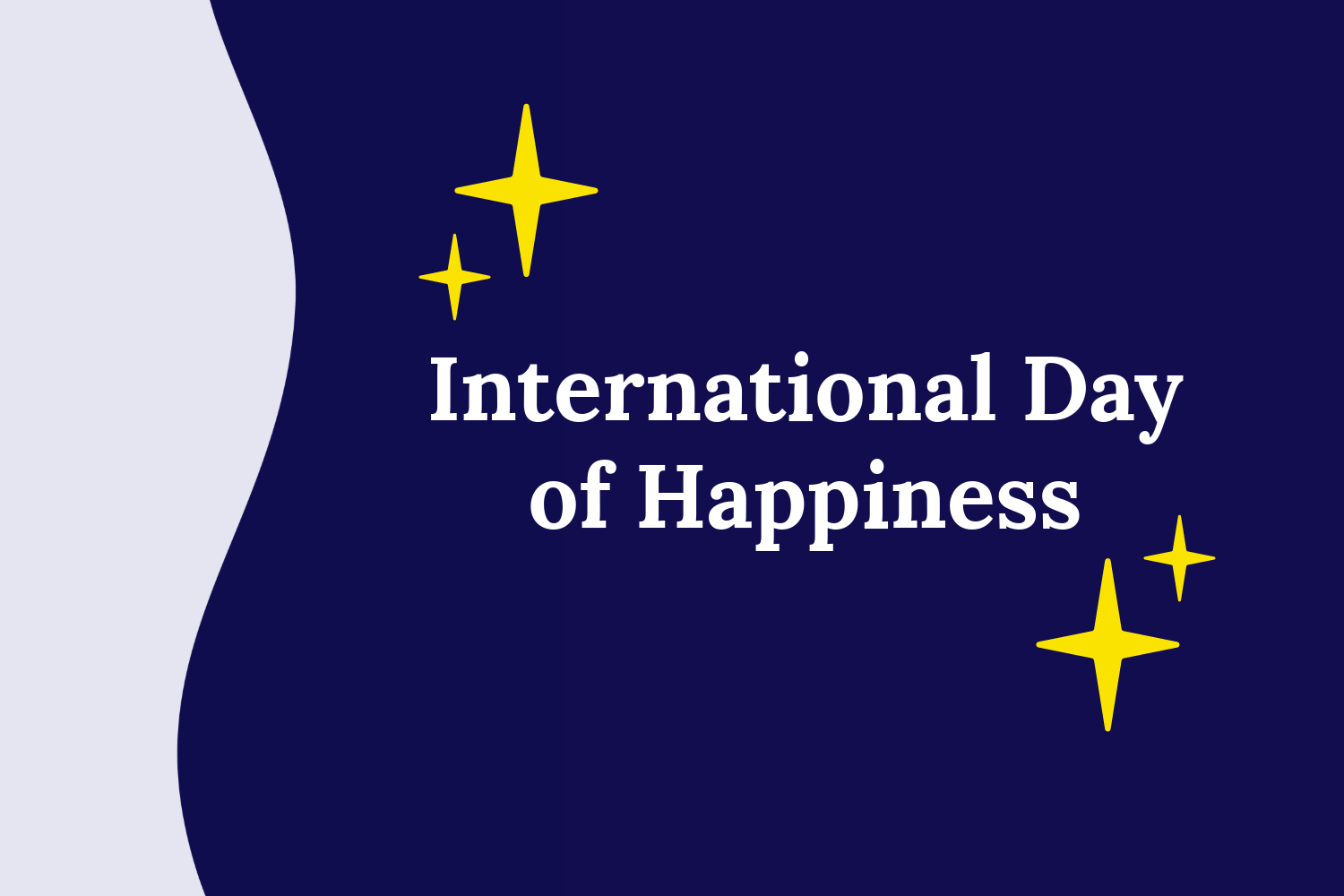International Day of Happiness happens annually on March 20th to recognize happiness as a goal in order to drive an equitable, inclusive approach to well-being. Action for Happiness, which is a nonprofit movement for a happier and kinder world has many resources and approaches to help move towards happiness as the goal for life and well-being. Check out the resources about International Day of Happiness below.
-
Day of Happiness (https://www.dayofhappiness.net/about)
-
UN International Day of Happiness (https://www.un.org/en/observances/happiness-day)
-
Action for Happiness (https://actionforhappiness.org/)
Happiness is something we are all looking forward to and striving for. In many ways, we just want to feel connected, recognized, and celebrated. The resources above are great for a general approach to happiness. In this blog, I am going to expand the broader concepts connected to happiness with disability inclusion and accessibility.
Kindness
Being kind and compassionate is the basic respect and approach that we should strive to have with each other. For persons with disabilities, this can also include being aware of someone’s access needs and providing greater access to the community. Being able to join spaces where people interact and socially connect with each other is crucial to happiness. Accessible spaces and interaction is key to happiness of persons with disabilities to connect with people in the community and having the kindness and respect to ensure that access needs are met. Below are some examples of being kind and respectful to increase inclusion of persons with disabilities.
-
Having conversations and activities will have different needs in mind. Flexibility and adaptability is key.
-
Ask if there are any access needs that should be consider and include their needs in the process
-
Having a honest and open conversation about accessibility and not waste persons with disabilities’ time with the inaccessibility
Quality Time
Quality time with people whether it is close family members and friends to members of the community feeds the human desire for social connection and belonging. Happiness is an overall goal and does not dismiss the many emotions someone feels over situations and interactions. For persons with disabilities, quality time strongly considers the quality of the interaction due to extra time use, different communications methods, and consideration of energy when spending quality time together without feeling ignored or judged. Below are some examples of different ways quality time can be perceived by persons with disabilities.
-
Being part of the conversations with family and friends with inclusive communications and environments
-
Meeting people where they are at, meaning, if energy is low, concerns about accessibility is high, finding the space that can accommodate people’s needs while still having quality time together
-
Considering access needs and time use when inviting a person with a disability
Community Involvement
We all want to participate in what life and the community has to offer. Events and activities are a major part of community involvement to encourage social interaction and connection within the community. Being able to participate as persons with disabilities means having accessibility be part of the process in ensuring that activities and events are accessible and inclusive. Below are some examples that need to be considered to increase involvement and participation of persons with disabilities in the community.
-
Consider different communications and information needs that must be met to have a safe, inclusive, and accessible experience
-
The design and built environment is evaluated and assessed with accessibility in mind
-
Quiet and rest spaces to consider sensory and energy needs
Celebration
The joy and happiness of celebrating whether it is for you or for others involves recognizing the person and their achievements. From celebrating successes to resilience to overcome to celebrating another year is something that can be bonded over for stronger and meaningful participation. Below are some examples that should be celebrated, especially of the lived experience of being persons with disabilities in the community.
-
Celebrate the changes that are happening to improve accessibility in the community
-
Celebrate the advocacy work (whether intentional or out of necessity) through the failures and the successes. Calling out the inaccessibility is hard.
-
Celebrate getting through the day
What are you doing today to increase happiness in your life and other members in your community?

